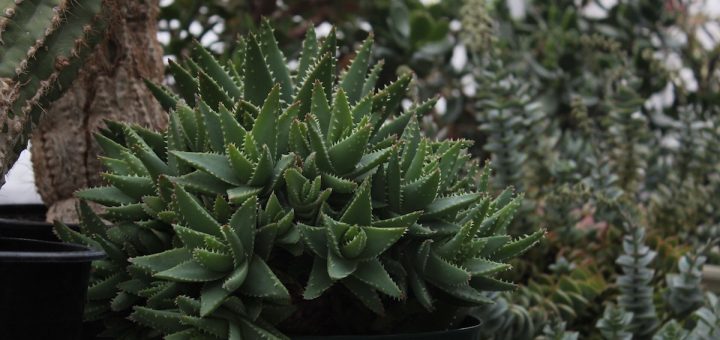MRU’s hidden oasis

On campus greenhouse home to plants and projects
By Robyn Welsh, Features Editor
Many students walk through the halls without the knowledge that there is a hidden oasis on the third floor: MRU’s very own greenhouse, home to numerous plant families. Years ago, the area where the greenhouse is located was merely a walkway. Since then, it has blossomed into a five room plant paradise with a pond for water plants, praying mantises and even some mesozoic era plants that date back to the dinosaurs.
The greenhouse has been through a lot. After many plants died in a construction project to fix leaks, Diana Fletcher, an MRU professor who is passionate about the beautiful space applied for a grant. A grant of over $21,000 was given to the school to bring life back to the greenhouse. Barry Moench, the staff member responsible for nourishing the plants, began to build up the collection. “Barry transformed the greenhouse from a mess to the beauty you see today,” Diana Fletcher said.
Moench has been working with plants nearly his whole life and began work at the greenhouse in February. By strategically buying plants with numerous seedlings, he was able to split them into several pots and allow the plant collection to grow more quickly. While many plant collections only have one of each plant, Moench likes to collect at least two of every plant when possible.
When Barry Moench isn’t taking care of the plants, he is a resource for helping students with projects or experiments involving plants. “I want more student involvement and I want more labs done up here. Because that’s what this place is all about,” Moench said. And as far as he is concerned, the greenhouse is a success when many students are getting involved in projects. Almost anything surrounding growing plants is fair game, and any students with ideas can get in contact with him.
SAMRU, MRU’s student association has also been involved with the greenhouse. They will be hosting a plant sale where they will be selling coleus, ivy, begonias, ponytail palms, violets and some succulents. Anyone interested should attend the plant sale which will be held Oct. 26 in conjunction with Sustainability Week and Month.
One of the most unique things that MRU’s greenhouse has to offer is Praying Mantises. While they can often act as a good pest control option, there are not enough large insects for them to eat so they have become an attraction for students and an interesting addition to the greenhouse. Sadly, the male praying mantis was eaten by crickets when in its vulnerable state after shedding it’s skin and now only females remain.
The greenhouse also refrains from using pesticides because of the close proximity to classrooms and air vents. Taking into account this lack of pesticide use, there is no food being grown currently. As well, it is difficult to get approval for growing food, and one of the rooms would need to be closed off because of food and safety standards. “No one wants bee’s knees in their lettuce leaves,” Barry Moench said, and the lack of pesticides could make avoiding bugs in food more difficult.
The greenhouse’s main function is as a learning facility for students. In my brief time walking through the greenhouse, Barry Moench taught me that orchid pups can take up to 3 years to flower. Patience is key when caring for plants, and a few simple tips can go a long way.
There is no shortage of amazing plants in the greenhouse, from pineapple, to mesozoic era plants, to the stapelia hirsuta – a plant that’s flower smells like dead bodies – you are bound to see something you never have before when visiting the greenhouse.
If you wish to get involved with the greenhouse, you can email Barry Moench at bmonech@mtroyal.ca with any questions and to set up a date. And remember, if you end up visiting, you will be able to meet the praying mantises!




